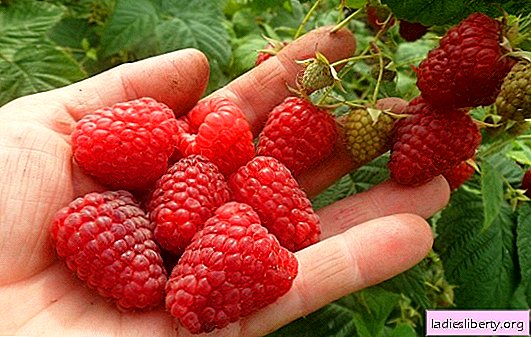
Familiar and gourmet food in different parts of the world is fundamentally different from the set of dishes that a person who lives in a particular area gets used to. Everything influences taste preferences: climate, culture, faith, traditions. Travelers have been convinced of this more than once.
But the most surprising is the specific smells of popular dishes, which the locals seem to be completely oblivious to, and tourists dislike their nose.
Kiwiak
Here is the real festive dish of the Eskimos, which is specially prepared for large celebrations, weddings. For cooking, you will need 400 bird scraper and a seal skin. Northern culinary specialists can prepare such a delicacy from 3 to 18 months.
Birds are poured into the skin of the seal, and in order to get out the air, they fill everything with fat. When the seal skin is filled, it is sealed with lard and buried, thus creating a press. You can pin down on top of a stone.
When it is time to eat a dug fermented delicacy, all that remains is to bite off the bird’s head and suck out the insides. But there is all this is needed in the fresh air, so as not to smell the whole house.
Copalhen
This food of the peoples of the north cannot be eaten by an unprepared person. The product contains such a quantity of cadaveric poison that an inexperienced eater will certainly receive poisoning. If he is not helped in time, he will simply die.
Kopalhen is a walrus, seal or deer immersed in a swamp for two to three months. After the corpse of the animal is removed, and, in fact, that's all. Now the meat needs to be cut into thin slices and eat.
Lutefisk
Everything has grown together in this Scandinavian delicacy: appearance, texture and, of course, smell.
History says that five hundred years ago, lightning got into the Viking’s fish depot. The fish was scorched and mixed with ash. A few days later, the men decided to wash the seafood from the ash and cook it in the usual way. They were surprised by the taste that was pleasant to them. Or maybe they were overly hungry.
So this dish appeared. Now the fish is not soaked in ash, but in an alkaline solution - for three days. During this time, a chemical reaction occurs, thinning fish meat. After this cod or saury is fried, boiled, baked. The smell is terrible, but the Norwegians, Swedes and Finns like it.
Surstroming
This masterpiece of culinary art is also rooted deep in history, in the XVI century. In those days when there was little salt, the herring was not salted and it began to ferment.
In this fermentation, the Swedes ate it. They ate, ate and fell in love so much that when the salt became plenty, it was already impossible to refuse the delicacy.
Today there is a technology by which herring is closed in jars, after a two-month salting. Since the fermentation process continues even when the herring is packed in jars, it is prohibited for transportation. Carriers do not want to be sprayed with smelly liquids.
Natto
These are fermented soybeans. A traditional Japanese breakfast rooted in feudal Japan, when rice, barley and beans were the main food. There were no refrigerators; why not eat fermented plants.
But time did not erase the samurai’s loyalty to the sticky, sticky mass of beans. Even now, they enjoy eating natto with rice. And the sickening smell of ammonia is such a side effect.
Limburger
This is a delicious cheese made from cow's milk. In many European countries, it is recognized as a delicacy.
A piquant intense taste accompanies the smell of long unwashed legs. It's all about the bacteria that are used to make this cheese.
In no case should you heat it in the microwave, or try to melt it. The smell will be like a hamster died under a sofa a week ago.
Millennial eggs
This Chinese delicacy is also called centenary eggs or secular eggs. And there are several options for making this treat.
The basis is eggs that are coated with a prepared solution of clay, lime, ash. Have to tinker still showering eggs with straw. Then put in a basket and bury, depriving a future appetizer of air.
Willingness is defined in different ways. Someone loves "fresher" and begins to dig out their snack in a week. True gourmets, in order to get real pleasure, wait several months.
During this time, the structure of the egg is completely changing. And the pungent smell of ammonia resembles cat urine.
Honggeo
Korean food with a sickening smell is made from stingray. Taste also like only local.
Stingray is a fish that does not have a bladder and kidneys. Nature arranged a stingray so that all waste products slowly come out through its skin, and in an adult fish, non-excreted waste is simply collected in a carcass.
When the ramp goes out during the cooking process, and this can be a whole month, it spreads the terrible smell of ammonia around. But Koreans like it.
Smelly tofu
This dish is also called rotten tofu, which does not significantly change the associative row in the perception of the name.
Deep-fried bean curd is customary served with pickled vegetables in Southeast Asia. The recipe is old, it is about 350 years old.
The popularity of food is so widely recognized that some countries celebrate "Smelly Tofu Day." This holiday falls on March 8th.
Durian
A masterpiece of nature itself, which created such a fruit, just in case, tightly "packing" its hard shell, covered with thorns.
As soon as the fruit gets rid of the shell, it starts to emit a smell that can be compared with a mixture of turpentine, sweat and rotten onions. The smell is very convincing, strong and pungent.
Due to its specific smell, durians cannot be carried to public places. But in bazaars and in special bars, it is popular with both locals and tourists. If a bad smell does not repel the gourmet, he can enjoy a pleasant taste.











